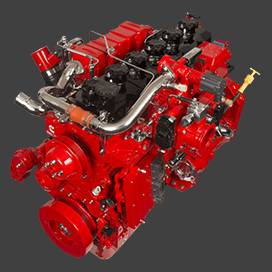Dec . 13, 2024 11:39 Back to list
how to get rear brake drum off
How to Get the Rear Brake Drum Off A Step-by-Step Guide
Removing the rear brake drum from your vehicle can seem daunting, especially if you’re new to automotive repairs. However, with the right tools, some patience, and a methodical approach, you can accomplish this task effectively. This article will guide you through each step of the process, ensuring that you do it safely and correctly.
Tools and Materials You'll Need
Before you begin, gather the necessary tools and materials
1. Jack and Jack Stands To lift and secure the vehicle safely. 2. Lug Wrench For removing the wheel. 3. Brake Drum Puller This tool helps remove the drum if it is stuck. 4. Screwdriver A flat-headed screwdriver may help in releasing the drum. 5. Pliers For grabbing any clips or springs. 6. WD-40 or Penetrating Oil To help loosen rust or corrosion. 7. Protective Gear Gloves and safety goggles to protect yourself.
Step 1 Safety First
Before starting any automotive repair, make sure you prioritize safety. Park your vehicle on a flat surface, engage the parking brake, and wear appropriate safety gear. Use wheel chocks to prevent the vehicle from rolling.
Step 2 Lift the Vehicle
Using a jack, lift the rear of your vehicle. Once it's elevated, place jack stands underneath the vehicle’s frame to secure it. Never rely solely on the jack, as it can fail.
Step 3 Remove the Wheel
Using the lug wrench, loosen the lugs on the rear wheel. It’s easier to do this while the wheel is still on the ground, as it prevents spinning. Once the lug nuts are loose, take off the wheel completely and set it aside.
Step 4 Inspect the Brake Drum
Take a look at the brake drum. Occasionally, dirt, debris, or rust may cause the drum to stick to the wheel hub. Inspect the area for any visible issues.
Step 5 Apply Penetrating Oil
how to get rear brake drum off

If the brake drum seems stuck, apply WD-40 or penetrating oil around the edge where the drum meets the hub. Give it a few minutes to penetrate, which can help break down any rust or corrosion and make removal easier.
Step 6 Remove the Brake Drum
1. Using a Drum Puller If the drum is stuck despite the penetrating oil, use a brake drum puller. Attach the tool according to its instructions, ensuring it fits snugly, and then turn the center screw to pull the drum off evenly. 2. Tapping Method If you don’t have a puller, you can tap the side of the drum with a rubber mallet. Do this gently, rotating around the drum to avoid damaging it. If the drum is still stuck, inspect for retention springs or clips that may need to be removed.
3. Checking for Retaining Bolts Some brake drums are held in place by retaining bolts. Check that these are removed if applicable.
Step 7 Inspect the Brake Components
Once the drum is off, take the time to inspect the brake shoes, springs, and other components. Look for wear and tear, and make notes on what may need replacing. If you’re not experienced with brake systems, consider taking photographs to help with reassembly.
Step 8 Clean the Brake Drum
Before reassembling any parts, clean the brake drum and surrounding components. Remove any dust or debris that accumulated during use. You may want to use brake cleaner for this job.
Step 9 Reassemble
If you are replacing brake components, follow the reverse order of disassembly. Make sure everything is secured properly, and don’t forget to reconnect any springs or brackets.
Step 10 Reattach the Wheel
Once everything is securely back in place, slide the wheel onto the hub. Hand-tighten the lug nuts and, with the vehicle still on jack stands, lower the vehicle back to the ground. After it’s stable, use the lug wrench to tighten the lug nuts fully in a star pattern for even distribution.
Conclusion
Removing the rear brake drum can be a straightforward task if approached with the right tools and knowledge. Following these steps allows you to complete the job safely and effectively. However, if you encounter significant resistance or feel unsure at any step, don’t hesitate to consult a professional mechanic. Remember, safety is paramount in any repairs, and making informed decisions will lead to successful automotive maintenance.
-
FUWA: Premium Quality, Reliable Performance & Innovative Solutions
NewsAug.25,2025
-
Liza Brake Drum: Superior Quality & Performance for Safe Driving
NewsAug.24,2025
-
Iveco Brake Drum | Premium OE Quality for Daily & Eurocargo
NewsAug.22,2025
-
Your Brake Drum Man: Quality & Performance Parts
NewsAug.21,2025
-
Explore Japan: Ultimate Travel Guide & Authentic Experiences
NewsAug.19,2025
-
Your Brake Drum Man: Premium & Reliable Brake Drums for Sale
NewsAug.18,2025
